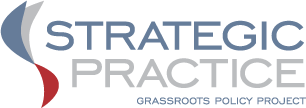The Health Insurance Labyrinth
Excerpts from Robert Zevin:
America spends more on healthcare than any other country in the world, despite our uniquely non-socialized system, yet our health outcomes are at or below the bottom of the range for developed countries. Total healthcare spending in the US amounts to $8,500 per person, more than double the $3,900 median value for healthcare spending in 21 other advanced economies. And what does all this extra spending provide US residents? Fewer doctors (2.5 per 1,000 people vs. 3.5 elsewhere) and lower life expectancy (78.7 years vs. 81.2).
Why? Multi-payer profit-insurance adds about 40% to the total cost, due to the layer of bureaucracy required in the medical system to maneuver through the health-insurance labyrinth. Because of the "lobbying" strength of the pharmaceutical industry, drugs sell for higher prices in America than anywhere else in the world, often by 100% or more. The US government pays for more than half of all US R&D to develop new drugs and treatment methods, but most of this research ends up profiting private medical firms. The uninsured, and more generally the poor, end up with grossly inferior care, which is often also more expensive because it is obtained at ill-equipped and underprepared emergency rooms. Unlike the rest of the world, most American doctors and health care providers are paid for the procedures they perform (diagnostic tests, surgery, etc.) compared to the fixed salary prevalent in most other countries. In the US there are almost 32 MRI scanners for every million people, which compares to a median of only 13 for other advanced countries.
Obamacare addresses few of these problems, and only obliquely. The entire system is still conducted through multiple private insurance companies. NIH (National Institutes of Health) research and innumerable price protections for drugs and equipment are left undisturbed. So too the pay-for-procedure system of reimbursement, although there are provisions intended to encourage group medical practices with fixed salaries. These shortcomings reflect the Obama administration's respect for major funders of politicians along with its consistent reluctance to fight for underdogs against the rich and powerful.
During the debate over the Affordable Care Act in 2009 and 2010, AHIP (America's Health Insurance Plans, the industry group representing health insurance companies) donated more than $100 million to the Chamber of Commerce, according to the National Journal. The anonymity of the process allowed insurers to claim they were cooperating with the Obama administration's attempts to improve efficiency, rein in costs and expand access, while in reality their dollars were hard at work drumming up opposition to reform. This lobbying money was the key to keeping the "government option" - in which the government would be a health care provider alongside the private sector - out of the legislation. So far, socially responsible investors have been unsuccessful in persuading the majority of other shareholders to vote in favor of proposals to report on more complete accounting of spending to influence public policy, including indirect funding of lobbying through trade associations and tax-exempt organizations, such as the American Legislative Exchange Council.
Like the failed Clinton healthcare reform effort, Obamacare picked a twisted path through a thicket of problems in order to avoid having the federal government pay for universal health coverage out of tax revenues. Like numerous other Washington initiatives in the past four decades, it sought instead to shift or mandate the cost onto employers, states and younger, uninsured citizens. The snafus that have accompanied the rollout of the healthcare exchanges may well be mostly due to carelessness on the part of the executive branch and its subcontractors in the implementation; but they are also due in considerable part to resistance from states, businesses and healthy young people who believe they do not need and cannot afford health insurance.
Amazingly, despite the ignominious beginning to open enrollment for Obamacare, US healthcare spending has been growing less rapidly than nominal US GDP for about five years. The reasons for this are: a growing appreciation of the efficacy of more patient-centered, procedure-limited approaches which yield better outcomes at lower costs; the slow spread of fixed-pay group medical practices; and the increasing resistance from employers to rapidly rising medical costs. This in turn has led to pressure on the insurance companies to lower their premiums by lowering their payments to healthcare providers. Employers have also moved toward shifting more of the insurance premium to employees and increasing the costs for which employees were directly liable.

